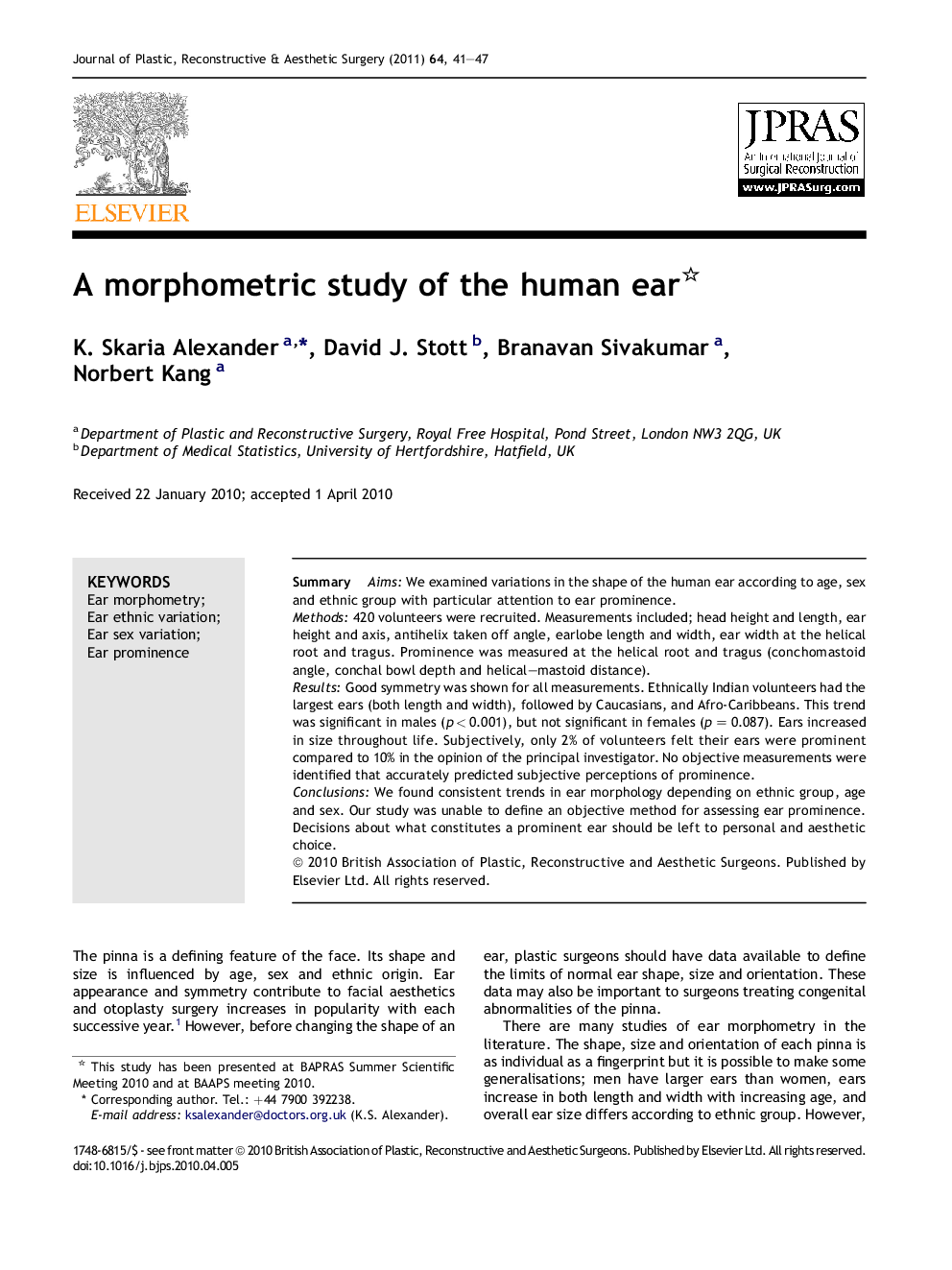| Article ID | Journal | Published Year | Pages | File Type |
|---|---|---|---|---|
| 4119218 | Journal of Plastic, Reconstructive & Aesthetic Surgery | 2011 | 7 Pages |
SummaryAimsWe examined variations in the shape of the human ear according to age, sex and ethnic group with particular attention to ear prominence.Methods420 volunteers were recruited. Measurements included; head height and length, ear height and axis, antihelix taken off angle, earlobe length and width, ear width at the helical root and tragus. Prominence was measured at the helical root and tragus (conchomastoid angle, conchal bowl depth and helical–mastoid distance).ResultsGood symmetry was shown for all measurements. Ethnically Indian volunteers had the largest ears (both length and width), followed by Caucasians, and Afro-Caribbeans. This trend was significant in males (p < 0.001), but not significant in females (p = 0.087). Ears increased in size throughout life. Subjectively, only 2% of volunteers felt their ears were prominent compared to 10% in the opinion of the principal investigator. No objective measurements were identified that accurately predicted subjective perceptions of prominence.ConclusionsWe found consistent trends in ear morphology depending on ethnic group, age and sex. Our study was unable to define an objective method for assessing ear prominence. Decisions about what constitutes a prominent ear should be left to personal and aesthetic choice.
